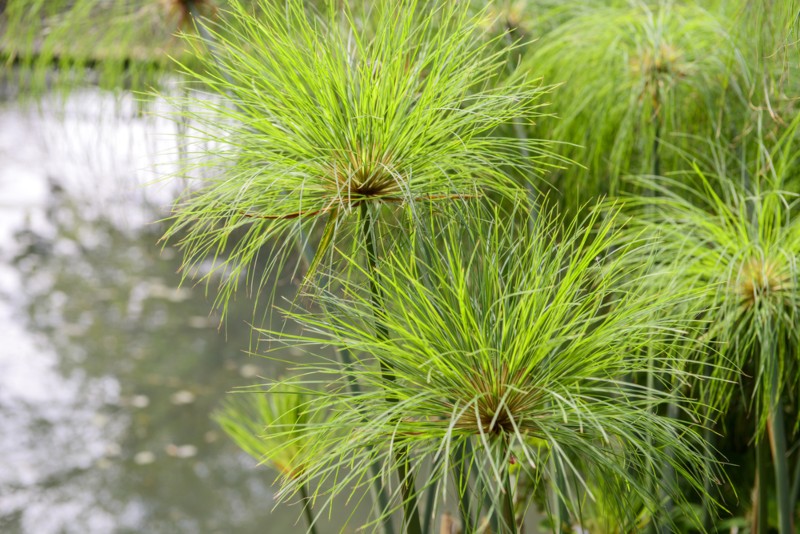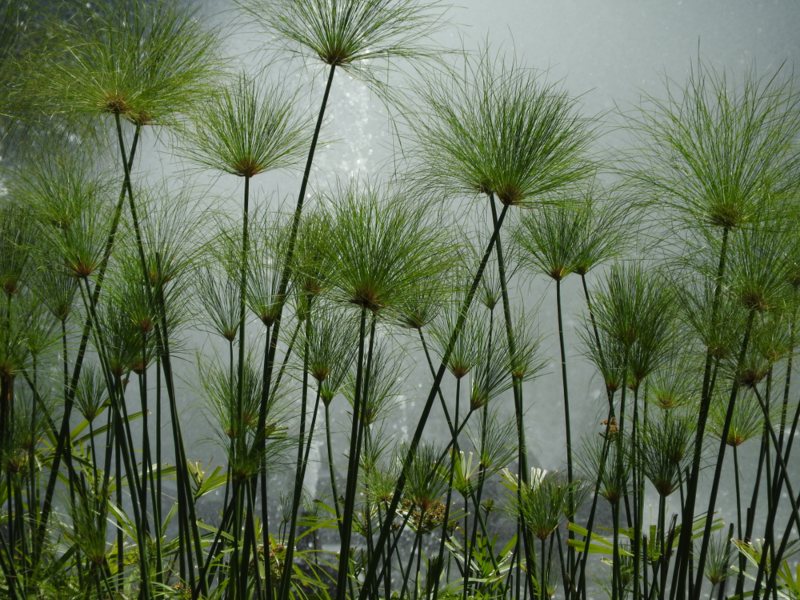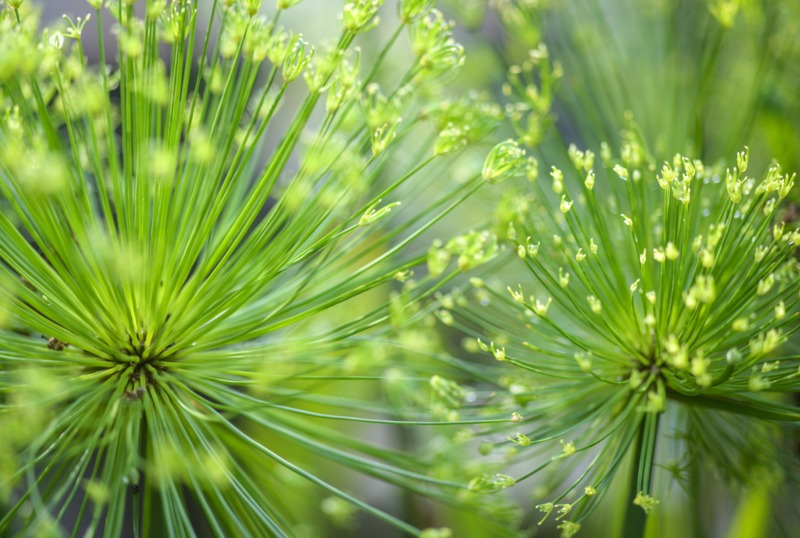
Papyrus, a plant species belonging to the family Cyperaceae, originates from ancient Egypt, where Egyptians used it to make paper.
Papyrus, scientifically known as cyperus papyrus, is closely related to the grass family and is often mistaken for grass due to its vibrant green color. However, the plant is a sedge since it favors moisture and is frequently found around water.
Although Papyrus is the plant’s most commonly known name, you might also hear it referred to as the umbrella plant or bulrush. Its umbrella-like tendrils sprout from a fast-growing, sturdy reed. The plant can grow up to 10-feet tall when given proper care.
| Botanical Name: | Cyperus papyrus |
| Common Name(s): | Umbrella plant, Papyrus, bulrush |
| Plant Type: | Sedge |
| Mature Size: | 5 – 8ft (10ft maximum) |
| Sun Exposure: | Partial to full sun |
| Water Needs: | At least 5cm at all times |
| Soil Type: | fertile, moist soil or wet, boggy earth |
| Soil pH: | 6-8.5 |
| Bloom Time: | Mid to late summer |
| Maintenance: | Low |
| Flower Color: | Green or brown |
| Hardiness Zones: | 8-10 |
| Toxicity: | Non-toxic |
Papyrus Plant Care

The plant requires ample sunlight and water, along with rich soil and a warm climate to thrive. As a plant that naturally grows along the edges of bodies of water, it requires either continuous rehydration or you need to plant it in a submerged location.
While Papyrus has many specific growing requirements, it isn’t challenging to grow. However, you still might want to consider light, water, temperature, soil, and fertilizer as these factors contribute to successful growing the plant.
Light
As a plant native to Africa and Madagascar, Papyrus soaks up the sun like no other. When growing papyrus, you would do best to plant it in an area that gets plenty of direct sunlight.
If you can’t find a spot with enough natural direct sunlight in your yard, the plant will survive in partial shade. The main focus when giving Papyrus light is ensuring it gets enough during the day.
So, if you have to plant your Papyrus in partial shade, you might want to check the area, making sure full sun can reach the plant for an ample amount of time throughout the day.
Water
Since Papyrus is a sedge plant, it requires an aquatic environment to thrive. Typically, in nature, you would find the plant nestled along a creek, stream, river, or other body of water.
The plant can survive in up to three feet of water, so don’t be afraid to plant it too close to the water’s edge. Make sure you plant it close enough to give the plant enough water and moisture to flourish.
Temperature
Again, the Papyrus plant loves the sun, which is due to its need for warmth. The plant does not thrive in cold climates, especially in areas where snow and frost occur.
The plant’s foliage will more than likely die back during the winter and flourish again when spring comes around. If you subject the plant to unsurvivable, cool temperatures, such as frost, the plant will most likely not come back.
If you live in a cold climate but still want to grow Papyrus, you can always move the plant indoors when the weather turns cold.
Soil and Fertilizer
The Papyrus plant prefers and requires moist, fertile soil to flourish. If you don’t plant your Papyrus directly into a water source, like a stream, you might need to wet the ground to ensure it gets enough moisture routinely.
If you have a water source in mind, you don’t need to worry about soil as you do the consistency of the earth bordering or within the water source. More specifically, the Papyrus plant requires fertile, muddy substrate to nourish its roots and keep the reeds firmly upright.
As far as fertilizer goes, you do not need to give the Papyrus plant any unless you want yours to grow to its maximum height. If that’s the case, you can sprinkle some fertilizer during the spring, not during the winter.
Are They Toxic?
Papyrus plants are not toxic, so they’re safe to keep in your home around your pets and children.

Propagation
If you plan to propagate your Papyrus plant, we don’t recommend doing so via seeds. The plant, even if kept in ideal conditions in its native environment, does not seed well. Instead, it would be best for you to propagate the plant through division.
Once the colder months have passed, you can cut up the Papyrus rhizomes into either two or three groups. Then, you can pot them as you would a fully grown Papyrus plant or deposit them directly into the ground.
Maintenance
The Papyrus plant is a low-maintenance plant requiring little to no maintenance. Ultimately, this status means that pruning is unnecessary for the plant unless you genuinely don’t want the plant to reach great heights. You can also prune the plant to remove dead limbs if needed.
Besides those two maintenance needs, you don’t need to touch the plant with a pair of shears.




